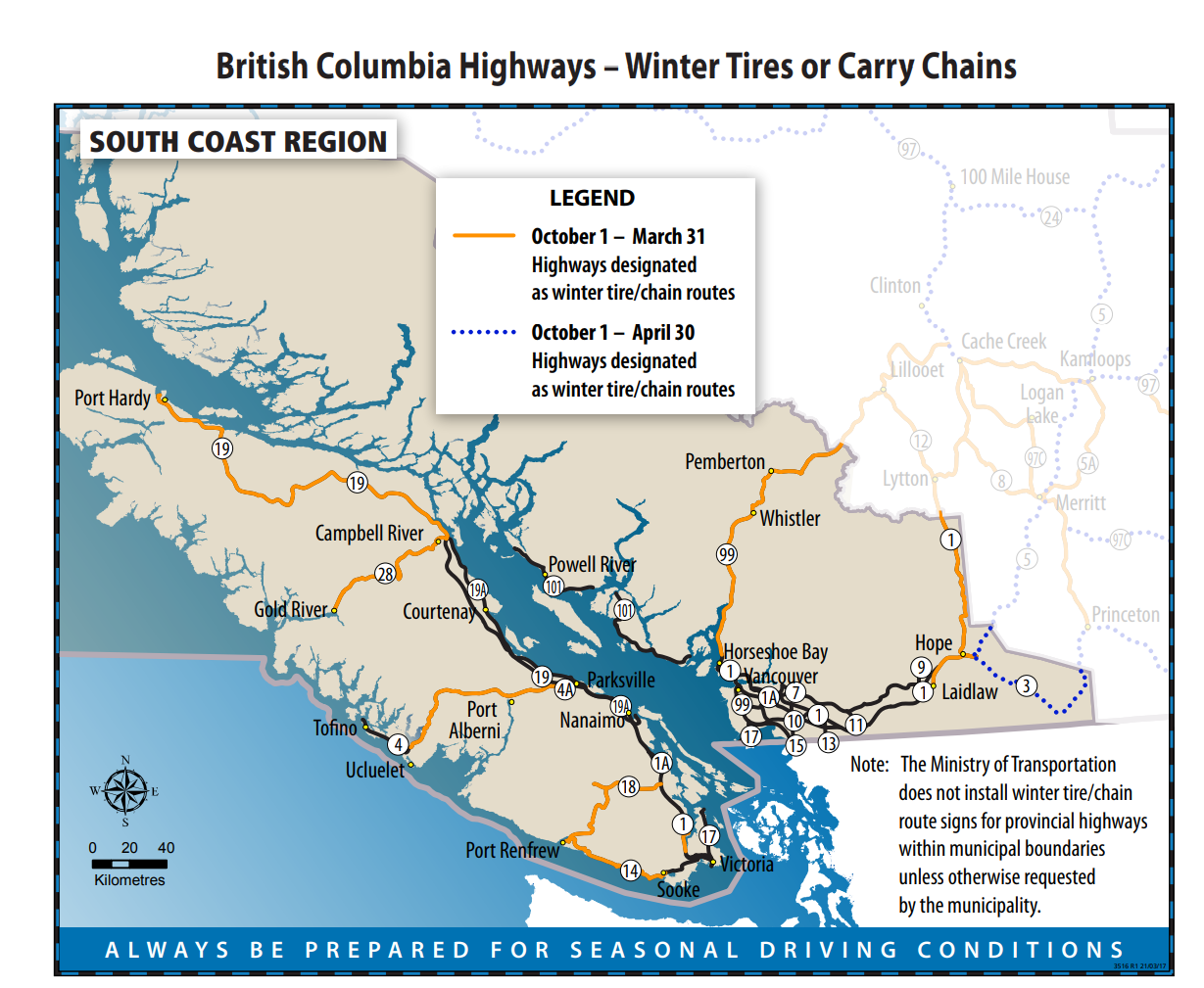
Winter tires or chains are required on the Sea to Sky Highway from October 1 to March 31. Winter tires or chains are required on most routes in British Columbia from October 1 to April 30. However, for some highways that are not located through mountain passes or high snowfall areas, tire and chain requirements end on March 31.
Sign up for local news alerts from Squamish Reporter
Road and weather conditions in fall around the Sea to Sky corridor can change quickly and increase the risk of crashing. Trace Acres, coordinator for Shift into Winter campaign, says wet, slippery roads can challenge even the most experienced drivers.
“Winter tires can help reduce the risk. To be legal, they must have at least 3.5 mm of tread. Tires displaying the 3-peaked mountain/snowflake symbol provide better traction and stopping distances when temperatures drop below 7C. Tires with the M+S (mud and snow) symbol also meet the legal requirement,” Acres says.
Adjust your driving in fall
The 16th annual Shift into Winter campaign starts in the fall to remind drivers of the need to start preparing themselves and their vehicles for winter. Drivers haven’t dealt with heavy rain, freezing temperatures, ice, snow, and fog for months and must adjust their driving to suit the conditions.
Even the best tires aren’t enough on their own. Drivers also need to adjust their mindset.
“There’s a misconception that crashes are always the fault of other drivers. We can get a little over-confident in our own abilities,” says Acres.
Driving too fast for the conditions and distracted driving are two of the leading contributors to crashes in B.C. at this time of year. “Both are within your control as a driver,” he adds. “Your driving decisions can affect the lives of other people on the road.”
Drivers can help keep themselves and their passengers stay safe by following these tips from the Shift into Winter campaign:
- Give your vehicle a seasonal check-up. Add anti-freeze and check tire pressure. Inspect brakes, lights, and engine belts. Install winter wiper blades and winter-rated washer fluid.
- Avoid driving when conditions are poor. Before you go, check DriveBC to see what you can expect on your route.
- Slow down. Posted speed limits are set for ideal conditions. Fall and winter conditions are not ideal.
- Leave at least four seconds of distance between your vehicle and the one in front of you. Following too close can lead to rear-end crashes on slick roads where stopping can be a problem.
- Put away phones and focus on driving. Drivers are 3.6 times more likely to crash when using a phone while behind the wheel, according to ICBC.
- Keep vehicle lights on at all times. Drivers need to see and be seen.
- Pay attention to instructions in roadside work zones. Flag persons and traffic control devices help you safely travel through uneven surfaces and narrow lanes.
All routes are marked with regulatory signs posted on highways throughout the province, and are enforced by the police, ministry or other enforcement officials. Motorists who are not compliant may be turned away and fined.
“We reserve the right to restrict travel at any time of the year depending on road conditions,” says the Ministry of Transportation and Infrastructure.



